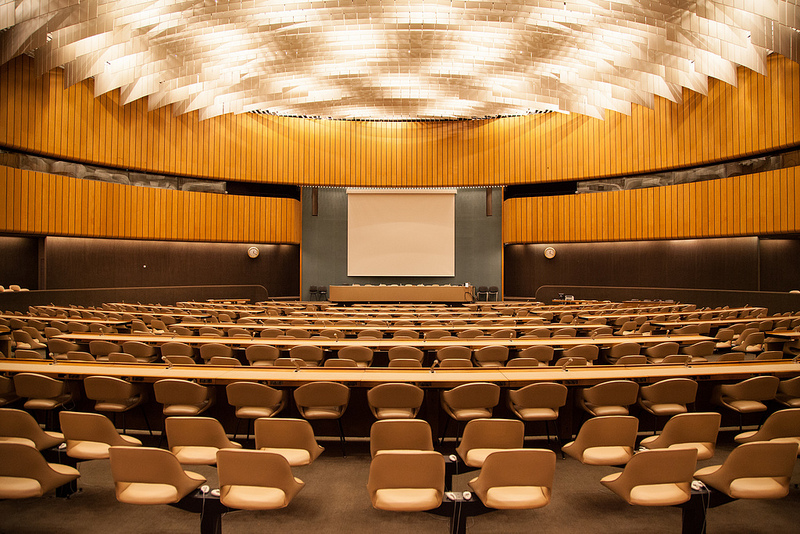
Welcome back for another installment of Ask TON. Here’s our latest question:
How do you decide which meetings/conferences to attend?
Jessica Marshall, freelance journalist:
The simplest answer to this question is, “Those that come to town.” Minneapolis-St. Paul hosts a reasonable, though not overwhelming, number of conferences, which provides me a chance to attend meetings other reporters might not travel for. The University of Minnesota and other local colleges also host symposia and workshops that can be worth attending.
Beyond that, as a freelancer, I know I need to attend a couple of meetings a year for my social sanity and to keep my three professional-looking outfits from getting too lonely in the closet, but I’d also like to be pretty certain there will be new science to mine for features or news stories. The American Geophysical Union meeting is a nice mix because plenty of press attend to socialize with, but there is also more than enough research to check out. Other big meetings like the Ecological Society of America offer a similar balance. Small meetings can be great for getting an exclusive story or if you are really specializing in a beat, but you need to vet them more closely ahead of time to make sure there’s something there before footing the bill for travel.
On the other hand, if what you’re really looking forward to about attending a conference is a hotel room to yourself, maybe you need a “non-conference.” I wrote about mine recently over at The Science Writers’ Handbook blog.
Tina Hesman Saey, molecular biology writer, Science News:
Since I’m a beat reporter, there are a few musts on my list of meetings, but those also meet my criteria for a great meeting. I evaluate meetings based on news value, potential to find feature stories and the opportunity to make contacts. It’s a jackpot when you find all three at the same meeting. Small meetings, especially those that don’t even have a press room, are often places to meet researchers and discuss ideas. Those tend to be meetings that are also fertile ground for growing feature ideas, although not always big on news value. If you do find news at a small meeting, chances are you will break the story as no other press are likely to be there.
Closed meetings, such as Keystone conferences and meetings at Cold Spring Harbor, can be tricky for news reporters. On the one hand, absolutely everything will be new and unpublished; it’s one of the conditions for presenting. On the down side, you have to get permission from the speaker to write about their work. I find many researchers are open to letting me cover their research. Generally, those presenters who say it is alright to tweet also give permission for news coverage. But even if you can’t cajole a researcher into letting you write a story, you still have a great overview of the papers that will make an appearance in the next year or so. Because those meetings are small they are also excellent source-building venues. Sometimes I choose a meeting based on location: if it is held in D.C. where I live and work, I will go.
Milka Kostic, Senior Editor, Cell Press:
This year I am breaking all the records: By the time 2013 is all said and done I will attend eight scientific conferences! As a scientific editor, one of my on-going responsibilities, beyond the hands on day to day work of assigning stories from journalists for the front of the book sections, selecting papers for peer review, and overseeing the review and decision process, is staying current with the fields that my journals are publishing in (structural and chemical biology), building relationships with scientists doing the research, learning about new directions research might be taking, and increasing the visibility of the journals. Attending conferences is one of the most effective ways in hitting many of these “birds” with one stone, and therefore always on top of my priority list when setting goals for the year.
I make the most of my travel plans for the following year in October of the year before, as my calendar tends to fill up quickly, and the conferences that I focus on are by and large scientific meetings focusing on specific topics covered in the journals I edit. But, I also try to include a conference on a topic that although not currently in the scope of what I publish, is of growing general importance, and from time to time a conference focusing on science editing, publishing, or science policy. Besides the topic balance that I aim for, which narrows down the choices considerably, I am also limited by my travel budget as well as time, so in a typical year the “October” list includes 5 meetings, most U.S.-based, and has one or two TBD spots, as I often find out about interesting meetings while attending other meetings. Finally, from time to time it happens that the Boston area, where I work and play, hosts a conference I am interested in. Since this cuts down my travel expenses considerably, those meetings move to the top of my priority list.
In terms of the ideal format, because the networking is such an important component of attending a conference, my favorites are those that have about 150 attendees, are four to five days long, have built-in social hours and joined meals, and take place in relatively remote locations. This usually ensures that by the end of the conference I have had an opportunity to meet and chat with almost everyone, and even make fast friends.


